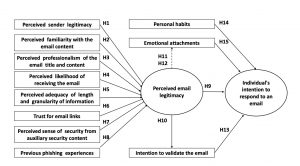UX reflections in UX Magazine
Curators of the Real-Time Web: Distilling the chatter to relevant, actionable information
By Jonathan Gosier (Appfrica)
“Information wants to flow and it wants to flow freely and torrentially. Twitter, SMS, email, and RSS offer unprecedented access to information. With all these channels of communication comes a deluge of overwhelming retweets, cross-chatter, spam, and inaccuracies. How do you distinguish signal from noise without getting overwhelmed? Can we somewhat automate the process of filtering content into more manageable portions without sacrificing accuracy and relevance?
These are the exact questions I attempted to answer during the recent earthquakes in Haiti and Chile. As the Director and System Architect of SwiftRiver at Ushahidi, we’re working on an open-source software platform that helps journalists and emergency response organizations sift through real-time information quickly, without sacrificing accuracy. These earthquakes, however unfortunate, offered extreme use-cases for testing ideas internally, as small nonprofits and organizations as large as the U.S. State Department were relying on us for verified information.
The approach SwiftRiver takes is to combine crowdsourced interaction with algorithms that weight, parse, and sort incoming content.”
The FedEx UX Journey, Part 1: The genesis and early progress of FedEx’s UX practice
By Thomas Wicinski and Brice Stokes (Digital Access, Fedex Services) and Mike Downey (UX Magazine)
“Underlying FedEx’s global shipping and logistics business is a complex technological infrastructure with many digital customer touchpoints. FedEx has recognized the need to improve the user experience of its systems, and has taken strong steps toward not only creating a UX practice area, but also toward moving the entire company to pay closer attention to UX in its customer-facing products. This interview is the first in a set of articles we’ll be running over the coming months to examine how FedEx is building its UX competency and practice. They’re still early in what they call the UX “maturity model,” so this interview focuses on the genesis of the effort and some of its early goals and successes.”
How UX can drive sales in mobile apps
By Jeffrey Powers, Vikas Reddy and Jeremy Olson
“This is an interview with Jeff Powers and Vikas Reddy, the founders of Occipital and creators of the popular iPhone app, RedLaser. We became interested in their story when we learned the differentiating factor between a somewhat unsuccessful first version and a wildly popular second version was due to their attention to UX.”




[…] UX reflections in UX Magazine […]